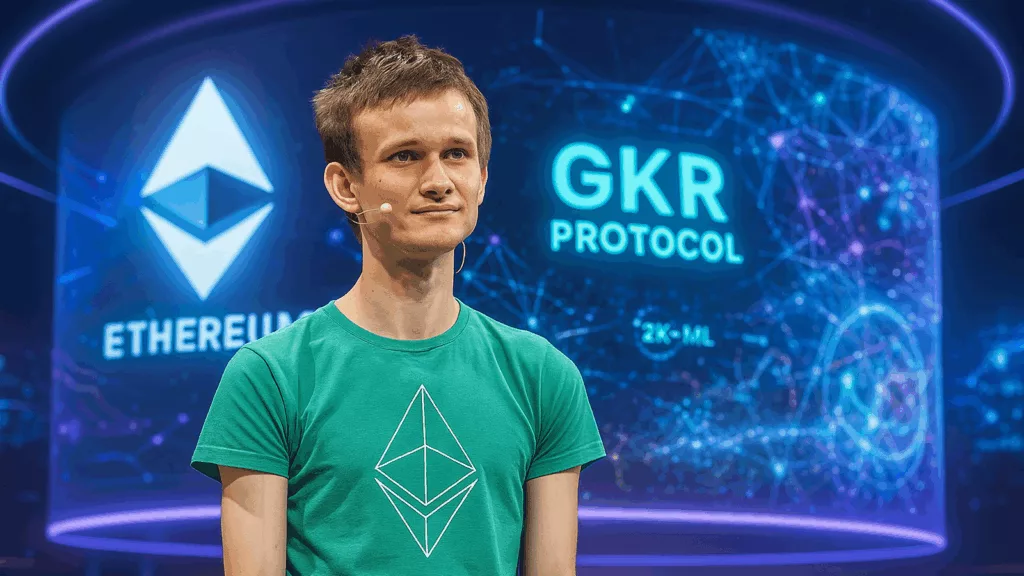- Vitalik Buterin has published a tutorial on the GKR protocol, showing how it can drastically reduce proof overhead for ZK-EVM and zk-ML workloads.
- The GKR protocol is built around a “batch × multi-layer” computing pattern and requires commitments only at the input and output level.
- Buterin estimates that overhead can be reduced from ~100× for traditional STARK methods to under 10× in practice.
Ethereum co-founder Vitalik Buterin has published a technical tutorial outlining how the GKR protocol (Goldreich–Kahan–Rothblum) can serve as a foundational upgrade to Ethereum’s cryptographic scaling stack. In the article, he uses the Poseidon2 hash function as a concrete example. He also breaks down the details of how multi-layer ‘batch’ computations can be optimized via GKR.
What does the GKR upgrade mean for Ethereum?
By adopting GKR, Ethereum’s roadmap gains a powerful scaling lever. ZK-EVM rollups typically face high overhead in prover time and proof size. This is mainly because of systems that post-validated proofs to the main chain. Now with GKR’s design these overheads shrink substantially because it will look at only input/output commitments, efficient ‘sumcheck’ rounds, and linear batching techniques. This means rollups, layer-2s, and even zero-knowledge proofs for large-language model (LLM) inference (zk-ML) could run more cheaply and quickly.
Newsletter
Get weekly updates on the newest crypto stories, case studies and tips right in your mailbox.
For the Ethereum network, the upgrade signals stronger throughput, lower cost for ZK-proof publishing, and potentially faster finality for rollups that rely on those proofs. As ZK infrastructure becomes more efficient, L-2s built on Ethereum stand to gain competitiveness versus alternative chains. Moreover, the ability to embed zk-ML workloads more efficiently could open new classes of applications on Ethereum.
But Buterin also flags off a couple of risk factors. Firstly, GKR by itself does not provide zero-knowledge privacy, but only succinct proofs. That means, GKR still needs to be wrapped in a ZK-SNARK or ZK-STARK to give privacy protections. He also warns about ‘predictability’ vulnerabilities when using Fiat-Shamir transforms in these circuits.
While this isn’t an immediate protocol fork or final upgrade announcement, it marks a crucial step in Ethereum’s ongoing drive to scale via ZK techniques.













